In the ever-evolving world of artificial intelligence, image generators have become a game-changer for marketers across various industries. As I previously worked for an animal feed producer, I decided to test two cutting-edge AI image generators: Flux.1 and Google’s Imagen 3.
My goal was to create engaging visuals for social media posts promoting feed for chickens, cattle, pigs, horses, and dogs. Here’s what I discovered in this exciting AI showdown.
The Contenders
- Flux.1: Developed by Black Forest labs, the team behind the popular Stable Diffusion model.
- Google’s Imagen 3: Available through Google’s Vertex AI platform and the AI Test Kitchen.
The Process
To ensure a fair comparison, I used ChatGPT to generate five creative social media posts and corresponding image prompts for our animal feed products. These prompts were then fed into both AI image generators to create visuals for each post.
The Results
-
Chicken:
- Flux.1 created an image showing chicken in a covered area with a beautiful landscape visible in the background. The chicken are gathered around a feed trough filled with golden feed, actively engaging with their food.
- Imagen 3 generated a more close-up view of a larger group of chicken. They are also near a feed trough, but the focus is more on the chicken themselves, showcasing their healthy appearance and the density of the flock.
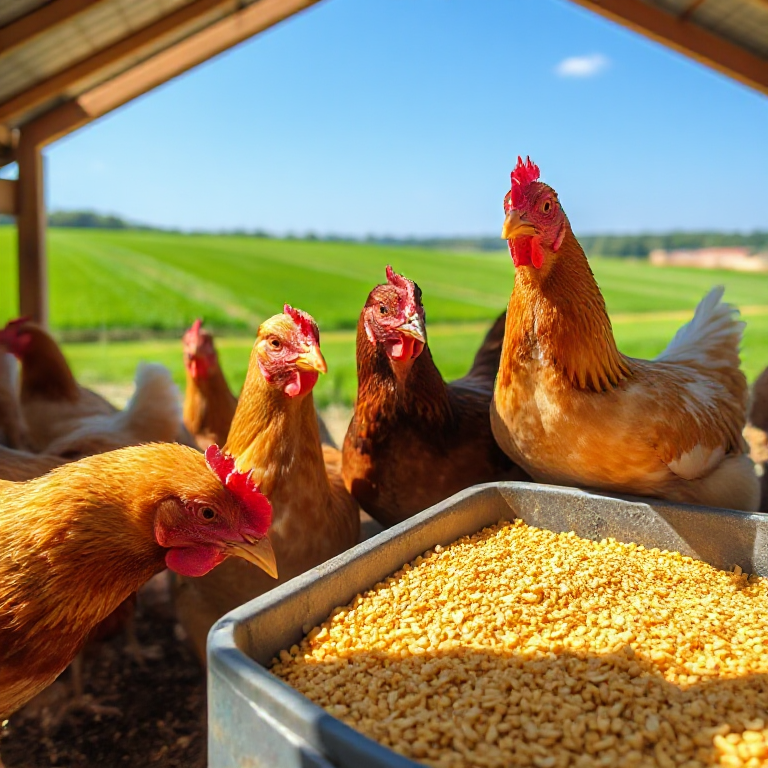
Flux.1

Imagen 3
-
Dairy Cows:
- Flux.1 produced an image of a group of dairy cows standing close together, facing the camera. There’s a feed trough in the foreground, emphasizing the connection between the cows and their nutrition. The background shows farm buildings and storage tanks.
- Imagen 3 created a scene of dairy cows in a feeding area, with their heads lowered to eat from a long trough filled with feed. This image focuses more on the actual feeding process and the farm structure.
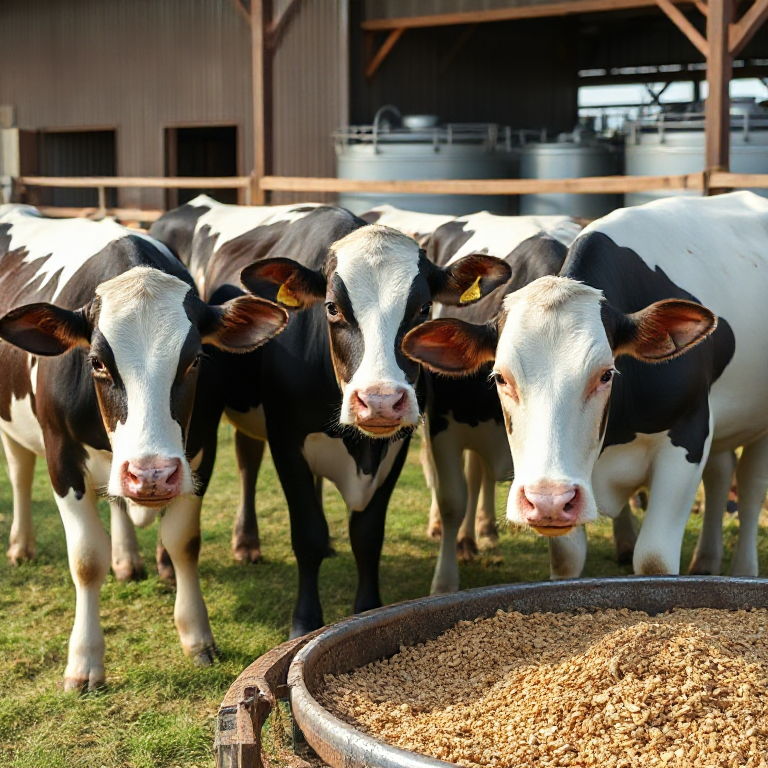
Flux.1
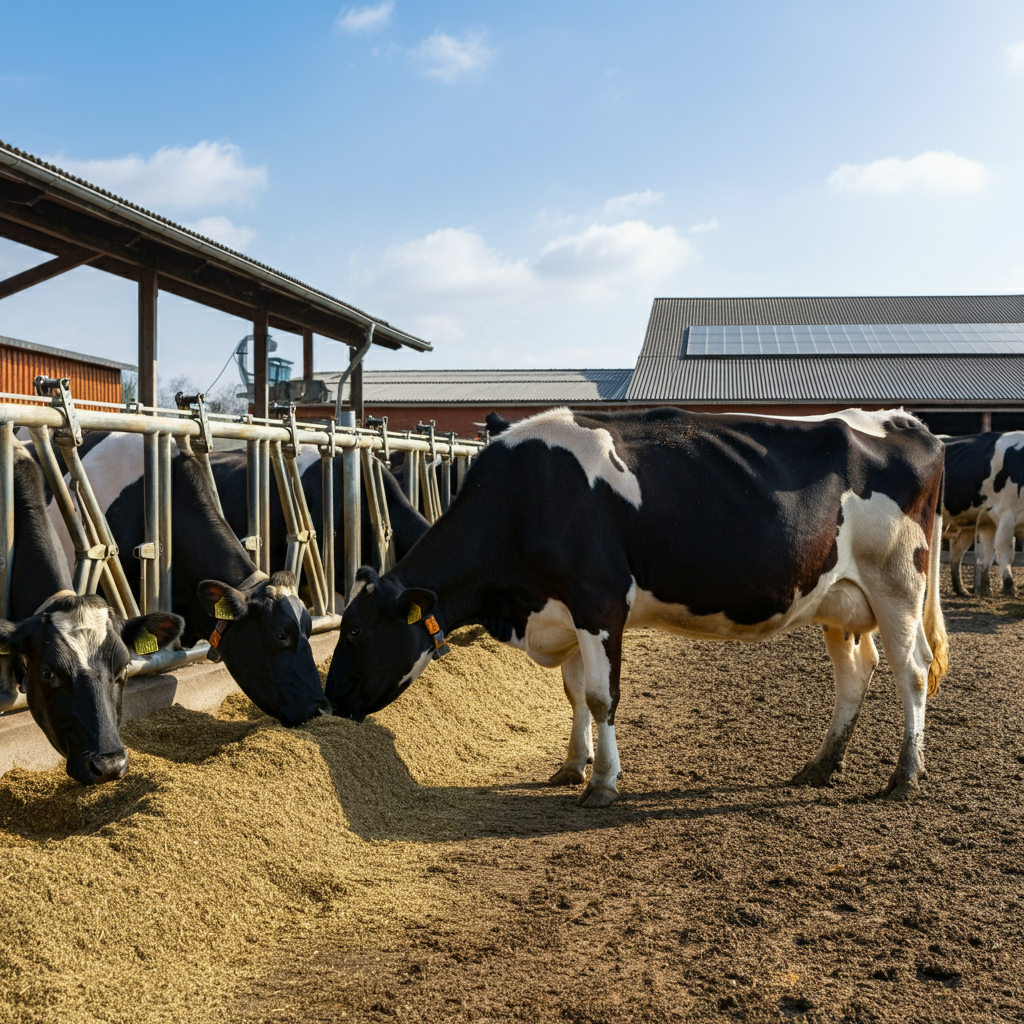
Imagen 3
-
Pigs:
- Flux.1 depicted a group of young pigs crowded together, looking curiously at the camera. A trough of feed is prominently displayed in the foreground, showing the connection between the animals and their nutrition.
- Imagen 3 focused on a closer view of a few pigs, showing more detail of their faces and bodies. While there is a feed trough visible, it’s less prominent, with the emphasis more on the pigs themselves.
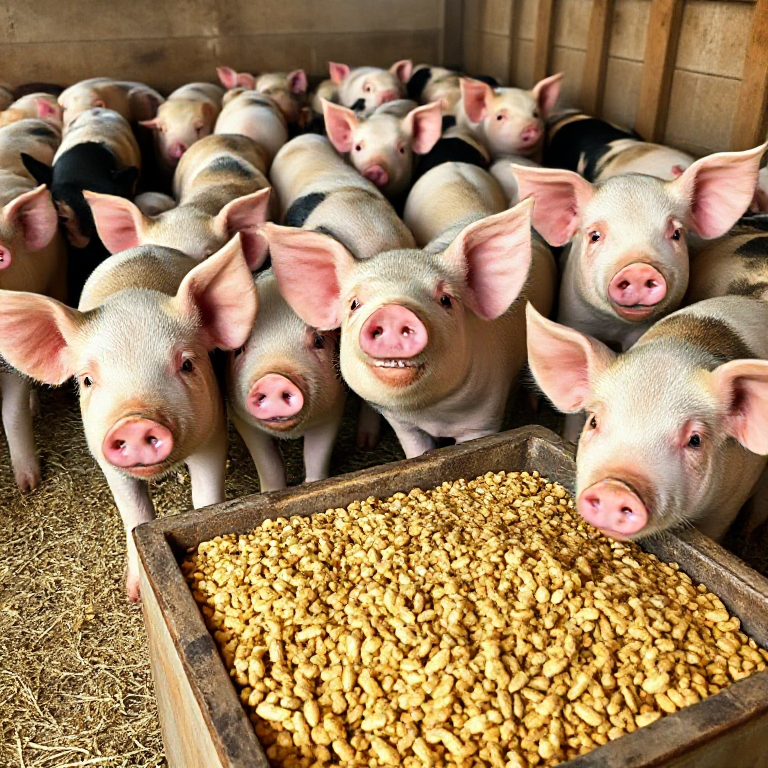
Flux.1
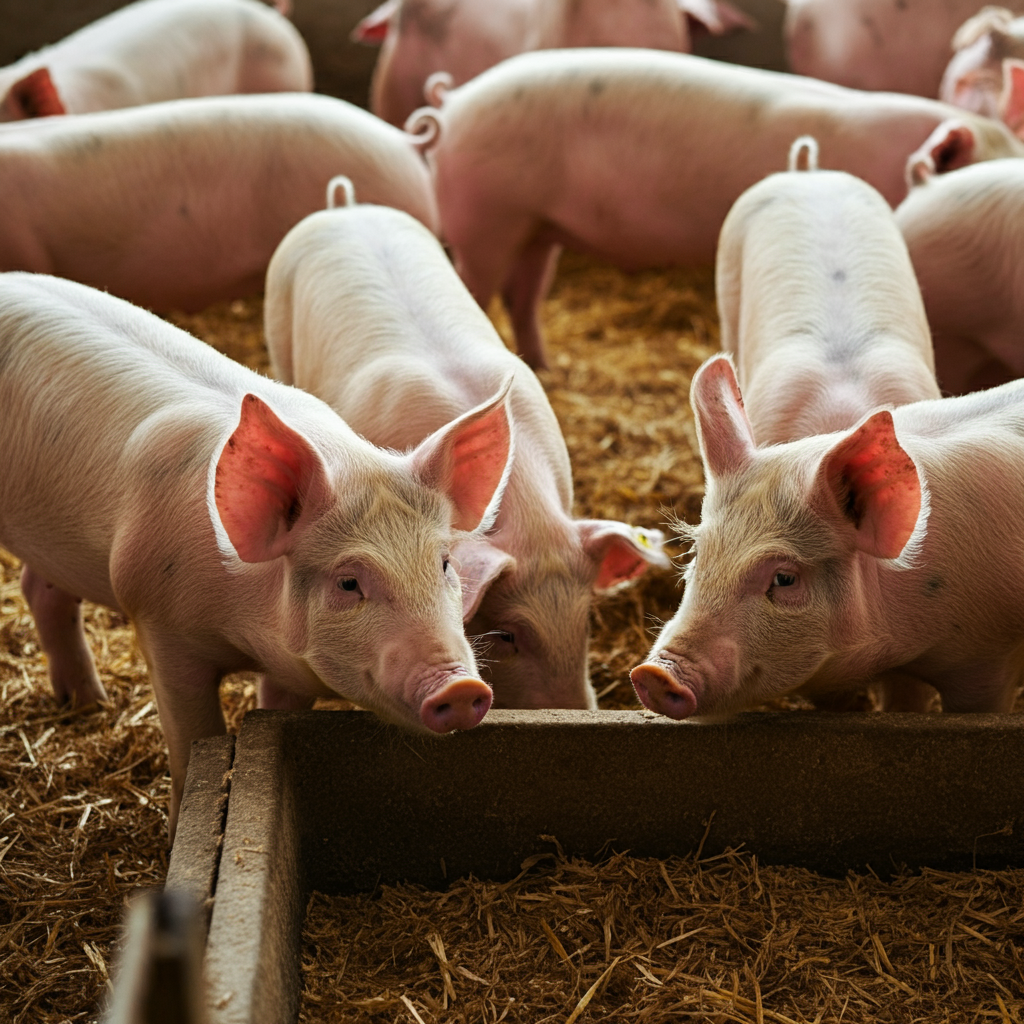
Imagen 3
-
Horses:
- Flux.1 produced a more dynamic scene with two horses. One horse is actively eating from a large black bucket filled with feed, showcasing the product in use. The other horse stands in the background, providing context of a well-maintained stable environment.
- Imagen 3 created a single, majestic horse portrait. This horse is fully tacked up with a bridle, suggesting it’s ready for riding. While there’s a feed bucket visible, the focus is more on the overall appearance and setting of the stable.
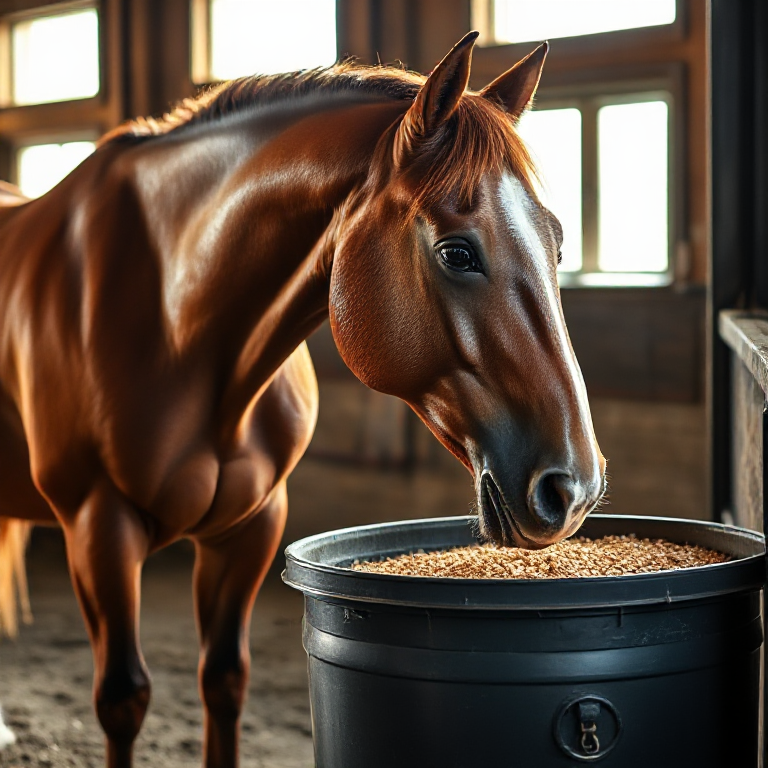
Flux.1

Imagen 3
-
Dogs:
- Flux.1 created an image with two Labrador Retrievers sitting side by side, both looking happy and engaged. There are two bowls of dog food prominently displayed in front of them, one ceramic and one metal, showcasing variety in feeding options.
- Imagen 3 produced an image of a single Labrador Retriever in a kitchen setting. The dog appears happy and well-fed, with a bowl of colorful kibble in front of it. The kitchen background adds a homely touch to the scene.

Flux.1
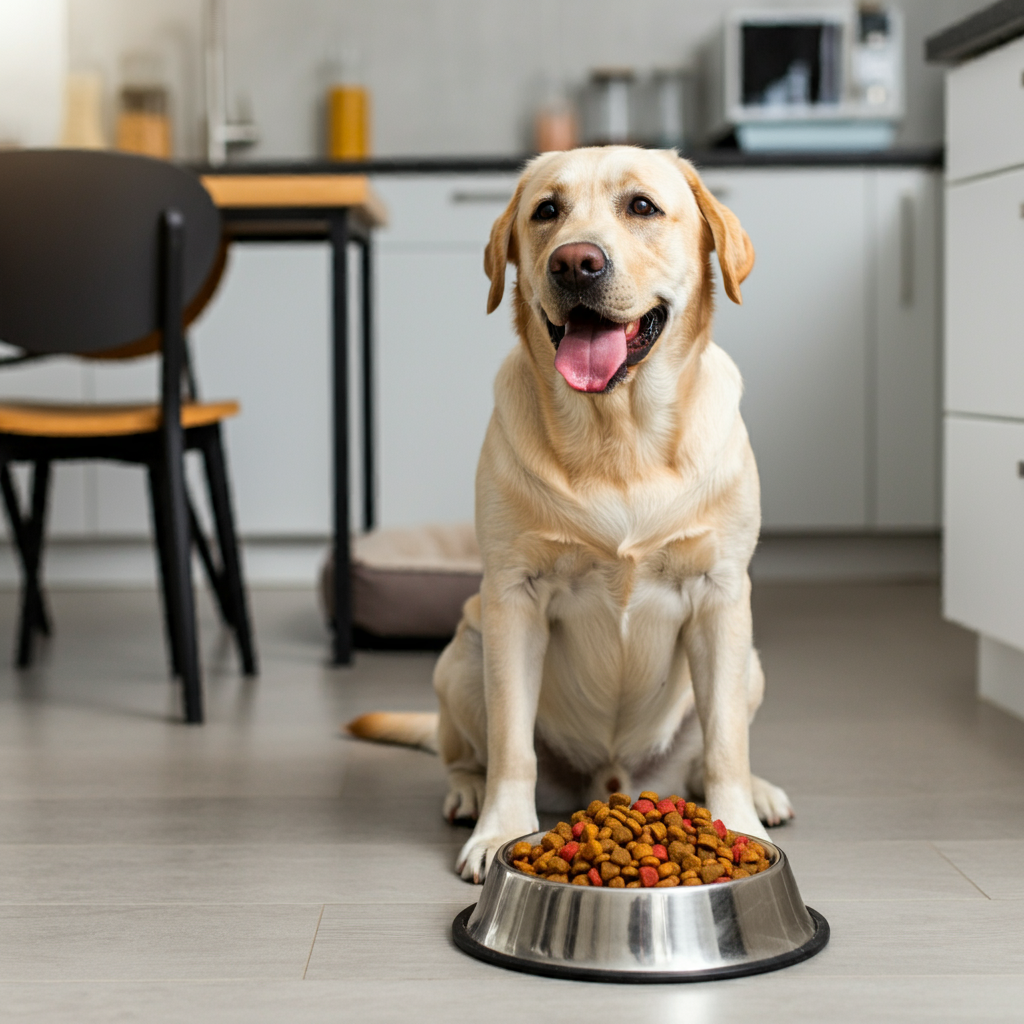
Imagen 3
The Verdict
After analyzing the images produced by Flux.1 and Google’s Imagen 3, we can draw the following conclusions:
-
Flux.1 consistently created images that highlighted the interaction between animals and their feed. The compositions often included more animals and showcased the feed prominently, making a clear connection between the animals’ health and the product being marketed. This approach could be particularly effective for campaigns focusing on the practical benefits and usage of the feed products.
-
Google’s Imagen 3 tended to produce images that emphasized the overall health and appearance of the animals, often with a bit more environmental context. While the feed was usually present, it was typically less prominent. These images could be especially useful for campaigns that want to focus on the end result of using quality feed - happy, healthy animals in well-maintained farm settings.
Both AI generators demonstrated impressive capabilities in creating realistic, high-quality images suitable for marketing animal feed products. The choice between them would depend on the specific marketing goals:
For campaigns emphasizing the direct benefits and usage of feed products, Flux.1’s approach might be more suitable. For campaigns focusing on the overall well-being of animals and farm environments, Imagen 3’s style could be more appropriate.
Ultimately, both tools offer valuable options for creating diverse and engaging visual content for animal feed marketing, allowing marketers to choose the style that best aligns with their specific campaign objectives and brand messaging.
Conclusion
For our animal feed marketing purposes, Flux.1 seems to have a slight edge due to its ability to showcase the interaction between animals and their feed more effectively. This aligns well with our goal of promoting the benefits of feed products.
However, both AI image generators have their strengths, and the choice between them may depend on the specific marketing message and style to be conveyed. As AI technology continues to advance, we can expect even more impressive tools to emerge, revolutionizing the way we create visual content for marketing and beyond.
Remember, while AI-generated images can be a powerful tool in your marketing arsenal, it’s crucial that they are used ethically and in compliance with platform guidelines.